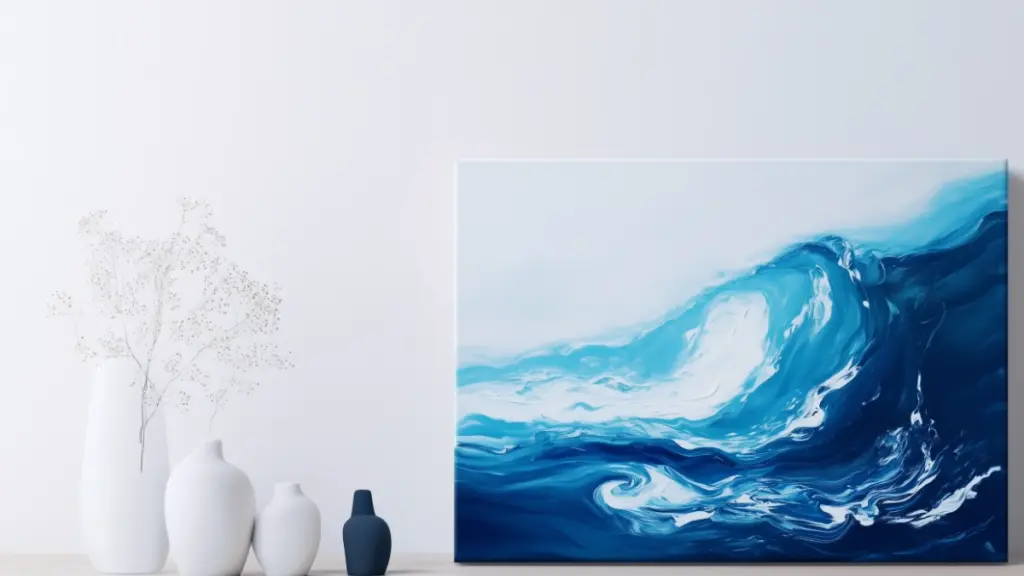Beach Wave Art: Inspiration from the Sea for Your Creative Spirit
Table of Contents
Few natural phenomena evoke the same sense of wonder as ocean waves. The rhythmic dance of the sea has inspired artists for centuries, serving as a timeless muse across cultures and mediums. In today’s creative world, beach wave art continues to grow in popularity—blending the calming visuals of nature with artistic imagination.
According to recent art trend studies, ocean-inspired art remains one of the top-requested themes for interior design, especially in coastal and minimalist homes. Beyond décor, wave art connects us to the therapeutic rhythm of the sea, offering moments of peace, vitality, and reflection.
This guide will take you through the captivating world of beach wave art—from different artistic styles and mediums to tips for creating your own masterpieces. Whether you’re an artist, a traveler seeking souvenirs, or someone looking to add coastal serenity to your space, prepare to be inspired by the endless beauty of the sea.
Different Styles of Beach Wave Art
Beach wave art isn’t confined to one style. Artists explore the ocean’s energy and tranquility through various techniques, from hyper-realistic paintings to abstract impressions.
Popular Styles
- Realistic Ocean Art: Highly detailed works capturing every ripple and foam detail.
- Abstract Wave Art: Emphasizes movement, color, and mood over strict form.
- Minimalist Ocean Pieces: Focus on gentle lines and muted tones for a serene aesthetic.
- Mixed Media Art: Combines resin, acrylics, and natural materials like sand or shells.
Wave Art Style Breakdown
| Style | Characteristics | Best For |
|---|---|---|
| Realistic Ocean Art | Detailed textures and true-to-life shades | Traditional, coastal décor lovers |
| Abstract Wave Art | Expressive shapes, bold colors | Modern, contemporary spaces |
| Minimalist Ocean Pieces | Simplicity and muted color palette | Calm, spa-like interiors |
| Mixed Media Art | 3D textures using resin or shells | Unique, tactile wall art collectors |
Choosing a style depends on the emotion you want the artwork to convey—calmness, energy, mystery, or joy.
Materials and Techniques Used in Wave Art
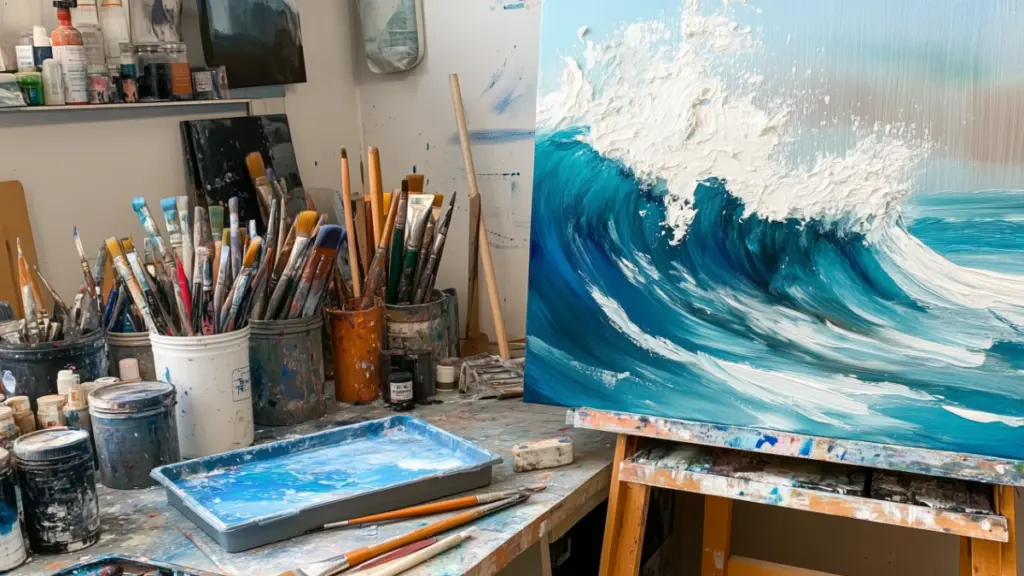
Materials and Techniques Used in Wave Art
Artists create mesmerizing wave scenes using a range of tools and materials. Some prefer traditional brushes, while others opt for innovative mediums to bring depth and movement to life.
Common Materials
- Acrylic Paint: Versatile, quick-drying, great for layering.
- Oil Paint: Rich textures, ideal for deep, vivid seascapes.
- Resin: Creates glossy, water-like finishes perfect for realistic wave effects.
- Watercolors: Delicate washes to capture translucent, dreamy waves.
- Texture Paste: Builds three-dimensional wave crests on canvas.
Technique Tips
- Pouring and Tilting: Used with resin or fluid acrylics to mimic the movement of water.
- Palette Knife Painting: Adds sharp, textured strokes for crashing waves.
- Layering: Essential for capturing depth in the sea’s many colors and foam patterns.
Art Materials Overview
| Material | Key Feature | Ideal Use |
|---|---|---|
| Acrylic Paint | Fast-drying and vibrant | Layered wave scenes |
| Resin | Glossy, glass-like finish | 3D ocean pours |
| Watercolors | Light, translucent effects | Gentle, misty beach scenes |
| Texture Paste | Adds real dimension | Surf foam and crashing waves |
Experimenting with combinations of these techniques can result in stunning, unique ocean scenes.
Expanded: Iconic Inspirations from Famous Artists
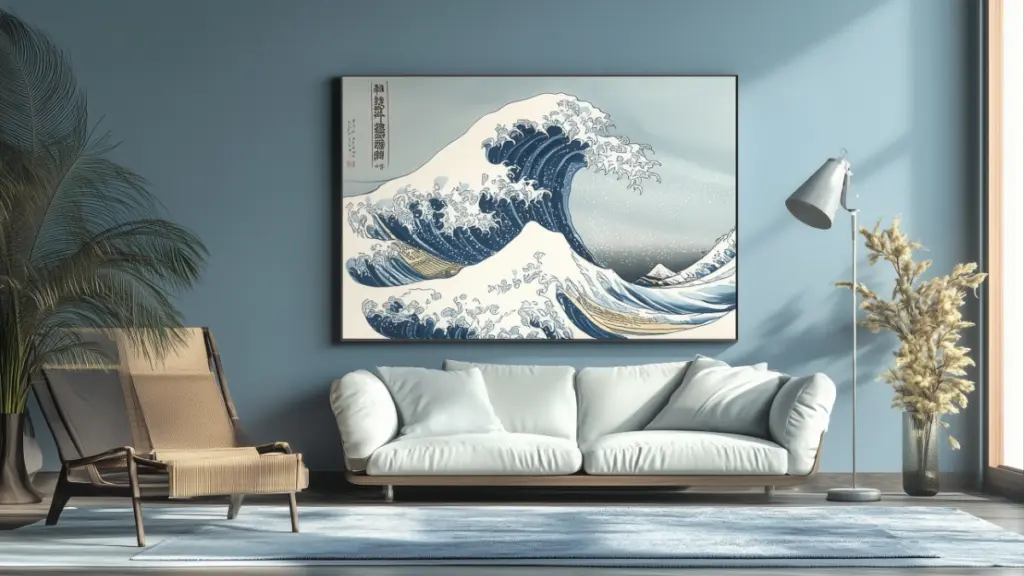
Throughout art history, the ocean has inspired countless masterpieces. Some of the most famous artworks feature waves as central themes.
Famous Artists and Their Sea-Inspired Works
- Katsushika Hokusai: The Great Wave off Kanagawa remains one of the world’s most recognized wave depictions.
- Winslow Homer: Captured the raw power and drama of the Atlantic Ocean in his seascapes.
- Claude Monet: Painted soft, impressionistic beaches and waves under different lighting.
Historical Ocean Art Inspiration
| Artist | Famous Work | Key Features |
|---|---|---|
| Hokusai | The Great Wave off Kanagawa | Dynamic, stylized wave forms |
| Winslow Homer | The Gulf Stream, Northeaster | Realistic yet emotional seascapes |
| Claude Monet | La Plage à Trouville | Light-infused, atmospheric water scenes |
These masterpieces prove that no two waves are the same—each artist’s interpretation offers a new way to experience the sea.
Modern Trends in Beach Wave Art
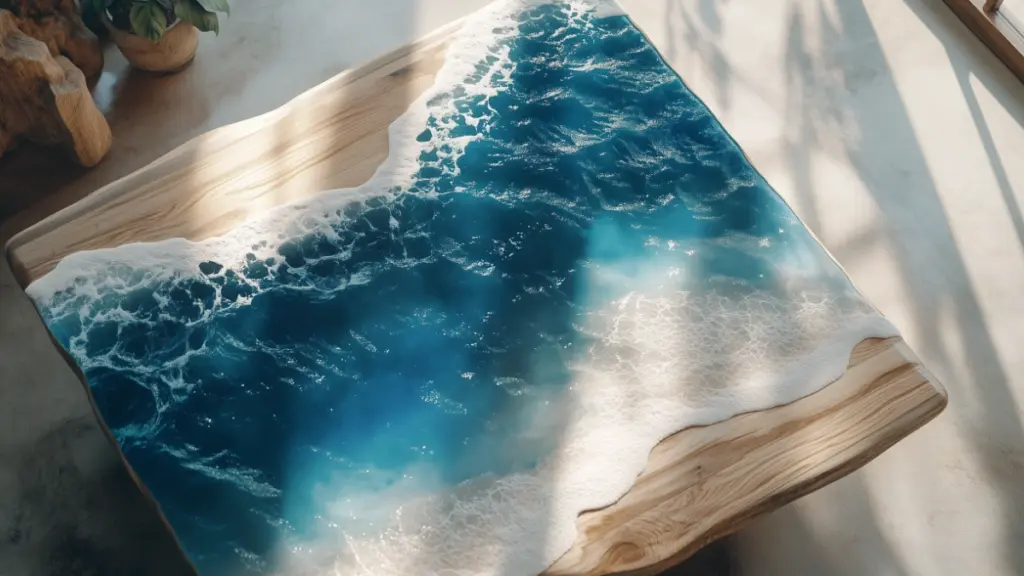
Contemporary artists are reimagining beach wave art in exciting new ways. Today’s trends mix tradition with innovation.
Emerging Trends
- Resin Beach Tables: Functional furniture pieces featuring oceanic resin art.
- 3D Wall Installations: Sculptural pieces that literally bring waves to life off the wall.
- Digital Beach Art: Artists using digital painting tools to create hyper-realistic wave scenes.
- Eco-Art: Using sustainable or recycled materials to highlight ocean conservation.
Modern Wave Art Trends Overview
| Trend | Why It’s Popular | Example Piece |
|---|---|---|
| Resin Beach Furniture | Practical meets artistic | Live-edge resin tables |
| 3D Wall Sculptures | Engaging, textural installations | Layered acrylic or resin waves |
| Digital Seascapes | Limitless creativity and color | Animated ocean pieces for screens |
| Eco-Friendly Art | Promotes awareness | Artworks made with ocean plastics |
Modern artists not only celebrate the sea but often advocate for its protection, blending beauty with meaning.
Creating Your Own Beach Wave Art at Home
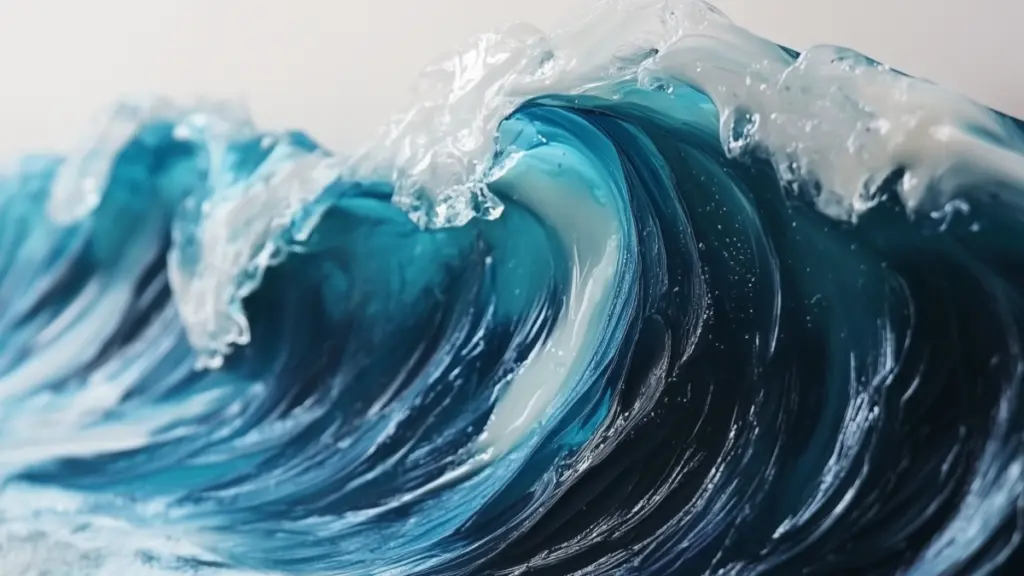
You don’t have to be a professional artist to create stunning wave-inspired artwork.
DIY Tips
- Start with a basic acrylic pour technique using blue, white, and teal shades.
- Layer darker blues at the top, lighter tones toward the bottom to mimic ocean depth.
- Use a hairdryer or straw to push white paint across the surface, creating a natural-looking surf line.
- Seal with a glossy resin topcoat for a realistic, wet look.
Simple Beach Art Creation Table
| Step | Description |
|---|---|
| Base Layer | Pour deep blue background |
| Midtones | Add lighter aqua and teal layers |
| Surf Creation | Blow white paint for foamy waves |
| Finishing Touch | Seal with clear resin |
Even small projects like coasters, trays, or mini canvases can bring oceanic serenity into your home.
Best Places to Find Beach Wave Art
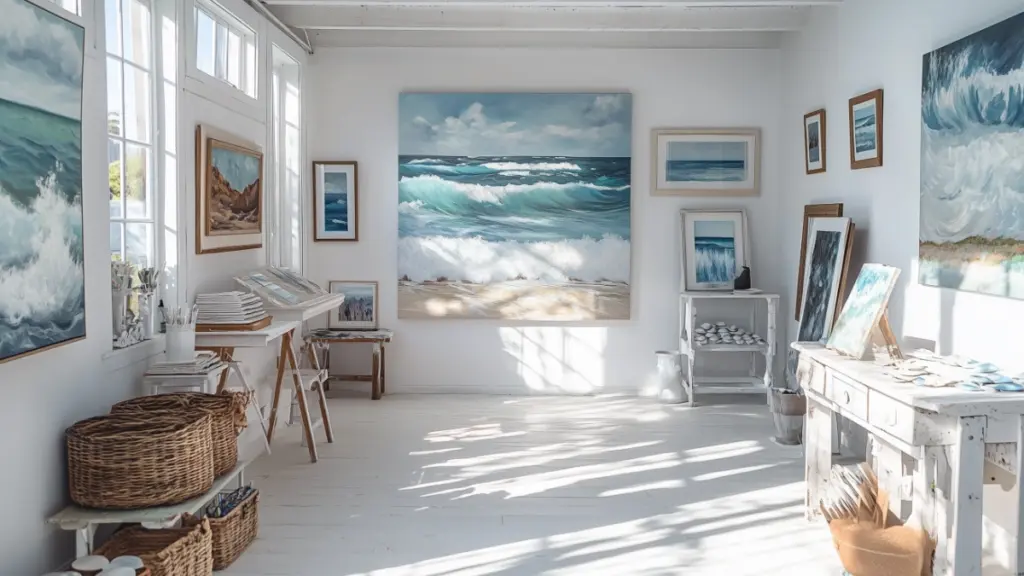
Looking to add a professional touch to your coastal space? There are many places to find beautiful wave-inspired pieces.
Where to Shop
- Local Coastal Galleries: Many beach towns have galleries featuring oceanic themes.
- Online Marketplaces: Etsy, Saatchi Art, and Minted offer a wide selection of wave art.
- Resort Boutiques: Vacation spots often showcase local marine artists.
- Art Fairs and Festivals: Great for discovering emerging talent.
Wave Art Buying Guide
| Source | Pros | Things to Watch |
|---|---|---|
| Local Galleries | Unique, often handmade | Higher price points |
| Online Marketplaces | Wide variety, easy comparison | Verify artist reviews |
| Boutique Shops | Curated, themed collections | Limited stock |
| Art Festivals | Chance to meet artists directly | Best for original pieces |
Whether you want a small piece for a corner nook or a large statement canvas, you’ll find endless options to suit your style.
Conclusion
Beach wave art captures something timeless—our innate connection to the sea. Whether through painting, sculpture, furniture, or digital media, artists continue to find new ways to express the ocean’s spirit. Inspired by famous masters or modern innovators, you can bring that endless beauty into your life, home, and creative projects. Every cresting wave, crashing surf, and gentle tide reminds us that nature’s artistry is always in motion—waiting to be explored and celebrated.


